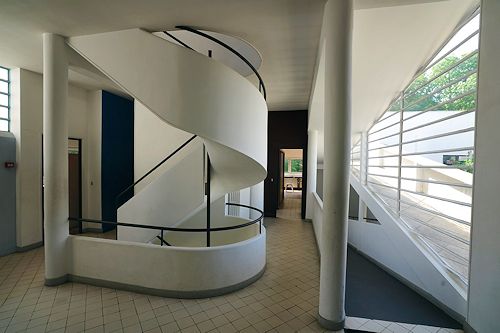history | not an easy book |
|
|
|
Although Wright did in fact "destroy the box" in the Prairie House, the rounded corners and solid walls of the Johnson Wax Administration Building are analogous to the diagonal and rounded corners of Borrornini's interiors and those of his eighteenth century followers-and for the same purpose: to exaggerate a sense of horizontal enclosure and to promote the separateness and unity of the interior space by the continuity of the four walls. But Wright, unlike Borromini, did not puncture his continuous walls with windows. That would have weakened the bold contrast of horizontal enclosure and vertical openness. And it also would have been too traditional and structurally ambiguous for him.
|
The essential purpose of the interiors of buildings is to enclose rather than direct space, and to separate the inside from the outside. Kahn has said: "A building is a harboring thing." The function of the house to protect and provide privacy, psychological as well as physical, is an ancient one. The Johnson Wax Building fosters a further tradition: the expressive differentiation of the inside and outside spaces. Besides enclosing the inside with walls, Wright differentiated the interior light, an idea with a rich evolution from Byzantine, Gothic, and Baroque architecture to that of Le Corbusier and Kahn today. The inside is different from the outside.
|
Another classic building of Modern architecture, again admittedly not typical, illustrates my point. The Villa Savoye with its wall openings which are, significantly, holes rather than interruptions, restricts any flowing space rigidly to the vertical direction. But there is a spatial implication beyond that of enclosure which contrasts it with the Johnson Wax Building. Its severe, almost square exterior surrounds an intricate interior configuration glimpsed through openings and from protrusions above. In this context the tense image of the Villa Savoye from within and without displays a contrapuntal resolution of severe envelope partly broken and intricate interior partly revealed. Its inside order accommodates the multiple functions of a house, domestic scale, and partial mystery inherent in a sense of privacy. Its outside order expresses the unity of the idea of house at an easy scale appropriate to the green field it dominated and possibly to the city it will one day be part of.
|
www.quondam.com/45/4506w.htm | Quondam © 2020.03.29 |



